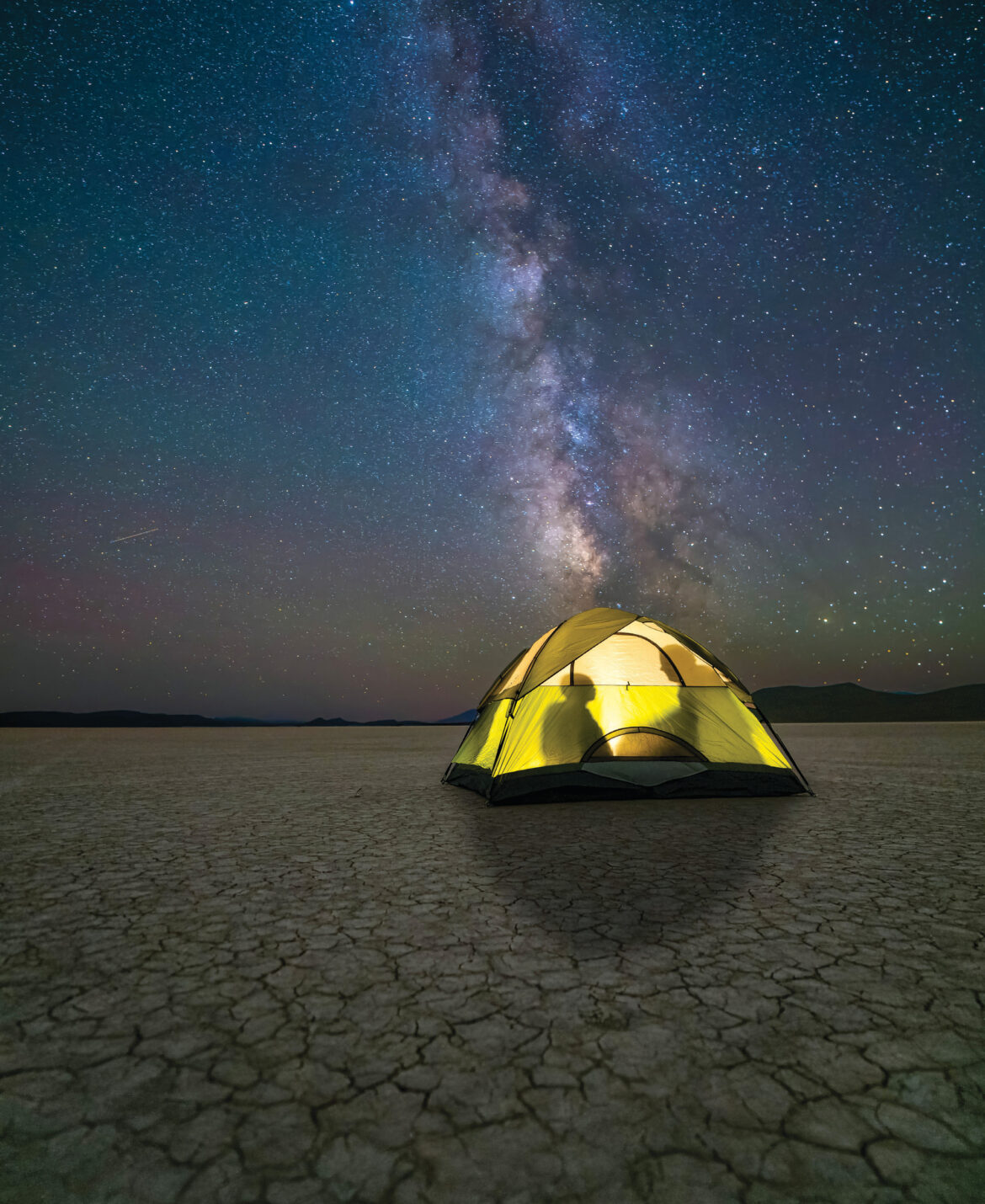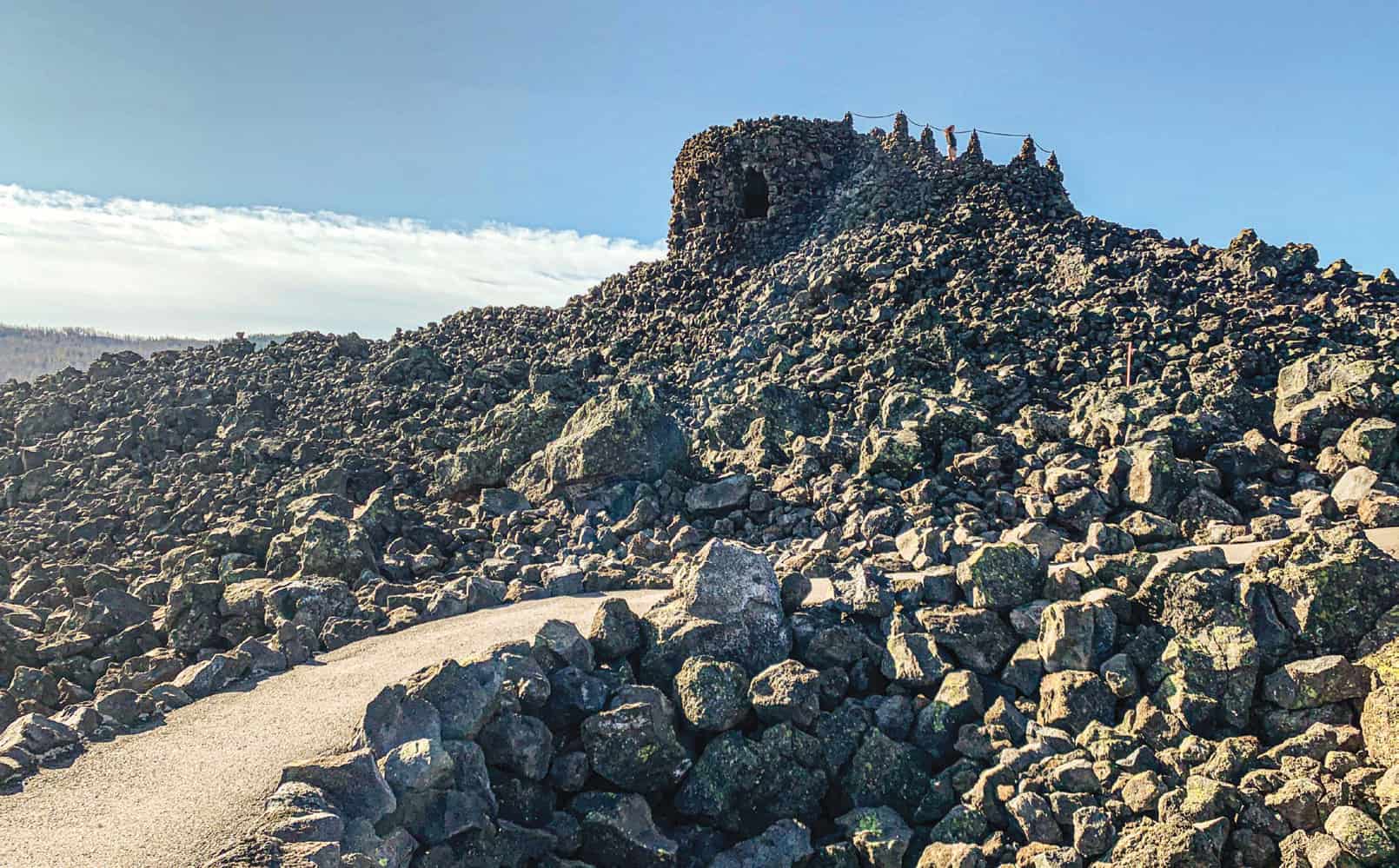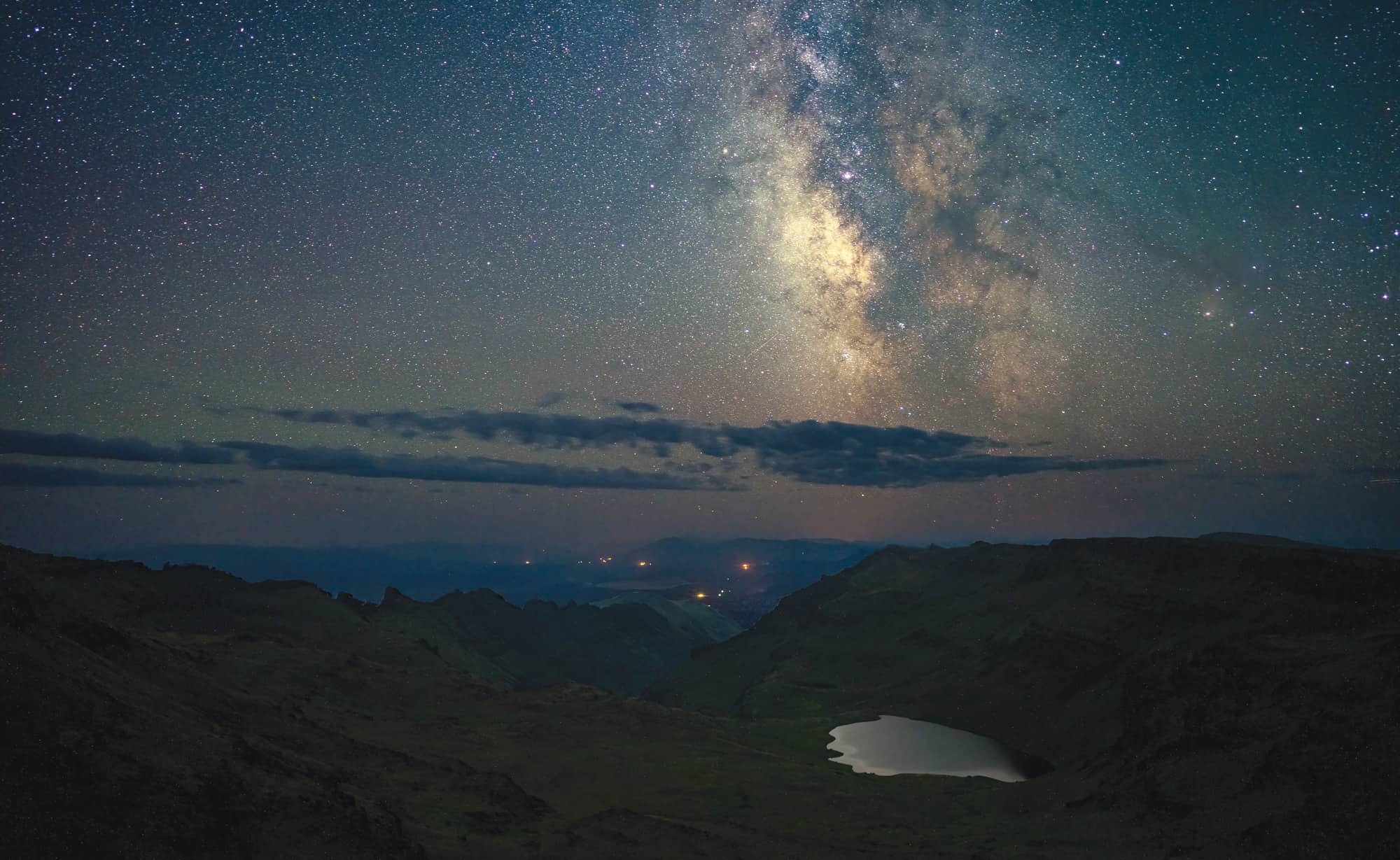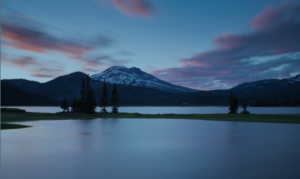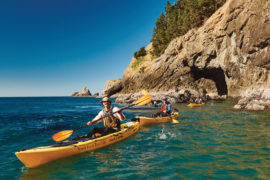Going beyond light pollution for celestial arrays
written by Jen Sotolongo
Outside of Oregon’s metropolitan areas lies a celestial sanctuary, where expansive landscapes, high desert elevation and commitment to preserving natural darkness create ideal astro-tourism opportunities for stargazers. With two designated International Dark Sky Places in Central Oregon and remote destinations hundreds of miles away from light pollution, Oregon offers cosmo lovers an abundance of stargazing options throughout the state.
CENTRAL OREGON
Central Oregon is a haven for stargazing enthusiasts thanks to its high desert location and frequent clear skies. Dedicated to preserving night skies, the region is home to two designated International Dark Sky Places offering ample opportunities to stare into night skies. From the Prineville Reservoir to dedicated observatories, Central Oregon offers a celestial symphony for all to enjoy.
Prineville Reservoir: Oregon’s First Dark Sky Park
In May 2021, Prineville Reservoir became Oregon’s first state park to earn certification as an International Dark Sky Park, one of fewer than 200 places in the world to earn the designation. The park offers free astronomy programs that run from Memorial Day to Labor Day on Friday, Saturday and Sunday nights. Rangers use lasers to point out constellations, and visitors can get up close and personal with the moon thanks to “Big Doug,” the 16-inch-diameter telescope. Camping is available at the park.
Observatories
With its commitment to curbing light pollution, Central Oregon is understandably home to a number of observatories to indulge in an evening of stargazing under untainted skies. Pine Mountain Observatory, located outside of Bend, sits at 6,300 feet and has incredible visibility thanks to the variety of telescopes. Spend the night at Pine Mountain Campground just across from the observatory.
Off of McKenzie Pass just outside of Sisters, Dee Wright Observatory is an open-air viewing platform situated in the middle of a lava flow. Built in 1935 by the Civilian Conservation Corps, the observatory is only accessible during the summer and early fall and ideal for those looking for a remote viewing experience.
The first designated IDA community in Oregon in 2020, Sunriver offers exceptional night sky viewing at the Sunriver Nature Center & Observatory. Visitors can take advantage of the three-dozen telescopes and seasonal nighttime interpretive programs.
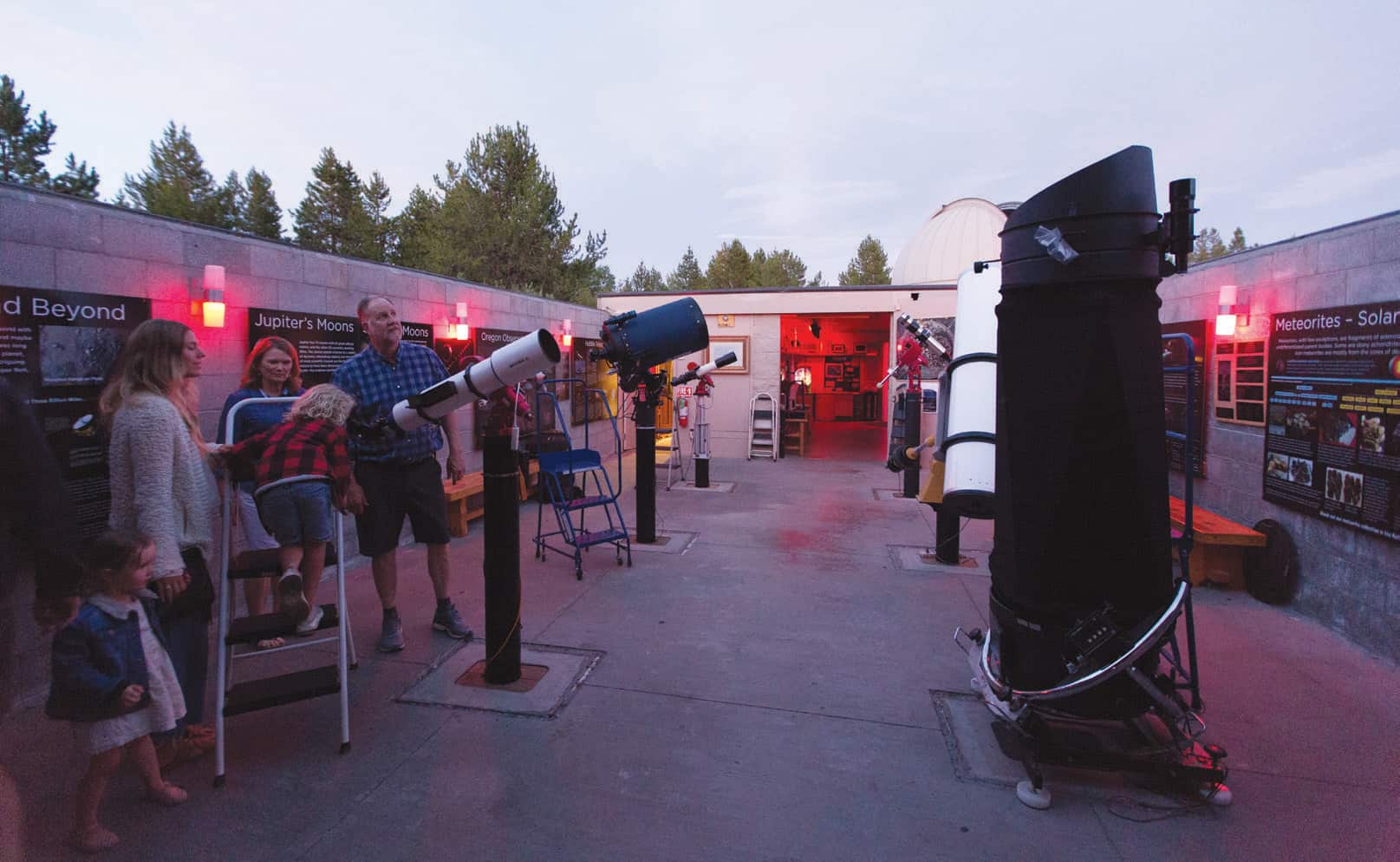
Photo by Steve Heinrichs/Visit Central Oregon
EASTERN OREGON
Known for its isolation, Eastern Oregon is worth the trip to check out the stars. Because of its location and minimal light pollution, the night sky views are some of the most captivating in the state. Camping opportunities are also ample in the region.
Southeast Oregon
The Alvord Desert, a flat playa framed by the Steens and Pueblo mountains, stands as a pristine canvas for celestial displays. Beneath the expansive night sky, visitors can witness meteor showers and the ethereal glow of the Milky Way.
Renowned for its towering cliffs and sprawling vistas, Steens Mountain is the highest point in the Southeast Cascades, revealing a tapestry of stars that seems to stretch to infinity. Fish Lake Campground is the known spot to go for optimal viewing.
The protected high desert landscapes of Hart Mountain make another optimal spot to enjoy the stars in Eastern Oregon. Similar to Steens Mountain, Hart Mountain towers over the surrounding landscape, making it a notable spot to catch an epic night sky.
John Day Fossil Beds National Monument
Named one of the Seven Wonders of Oregon for its colorful, otherworldly landscape by day, John Day Fossil Beds also happens to put on a show at night. With some of the darkest skies in the state, the remote location is known to put on a mesmerizing celestial show. For optimal gazing, consider visiting during meteor showers or other astronomical events.


